Many words define coffee, but the only word that defines the most luscious and luxurious coffee is 'Kona'. If you've never tried Kona, it's the gourmet coffee of Hawaii that you've been missing. Moreover, if you’ve been lucky enough to taste 100% Kona, I'm sure you'll agree that there's more reasons to visit Hawaii then tans and waves...
This article will cover the best Kona coffee brands and reviews, the basics and history of Kona coffee, how 100% Kona is graded and classified, and more! Everything you need to know about Kona coffee for those of us have never had the pleasure of visiting Hawaii!
Ready, got you're Kona coffee (optional) in hand? Here we go...
Quick Kona Brand Comparison
Koa Coffee plantation | Hawaii Coffee Company | Volcanica Coffee |
|---|---|---|
| ||
| |
The Basics of Kona Coffee

Kona History
In 1828, the first coffee plants came to Hawaii from Brazil. In Hawaii, they were planted in Oahu. Though the coffee grown in Oahu was for ornamental purposes, the harvest was huge.
Coffee growing then spread to the Hawaiian Islands and the Kona District of the Big Island in 1828. The cultivation of coffee in the Kona District was by the Christian Missionaries who had taken residence in Hawaii less than a decade earlier.
By the end of the 19th century, there was substantial coffee cultivation in Hawaii taking up a big chunk of land on the island. Coffee cultivation flourished in the Kona District more.
In 1892, Guatemalan coffee plants got introduced in the Kona District, and given the conditions in the Kona Islands, the Guatemalan coffee became the dominant type of coffee in the Kona District. Today, the coffee grown in the Kona District is predominantly coffee of Guatemalan Descent.
Though the production of Kona coffee slowed in the 1960's because of the cost of labor, the market demand, and the changes in pricing, it picked up again in the 1980's when interest in Kona coffee increased. Since then, coffee shops continue to sell this gourmet coffee in large quantities as the demand keeps increasing.
What Exactly is Kona Coffee?
Kona Coffee is the market name of the Arabica coffee varieties which grow in Hawaii’s Kona District. Pure Kona is wholly Arabica, but that’s not all that makes this coffee unique and internationally acclaimed.
The reason why Kona coffee is famous is the result of its supremely high-quality.
Six unique identifying characteristics of Kona:
1. Acidity
Kona coffee has a mild acidity; most desirable quality of coffee, and it's responsible for the brightness or the verve of the coffee.
2. Aroma
The aroma defines how the coffee smells even before you taste it. You get whiffs of coffee when it's brewing or after brewing. Kona coffee has a sweet fragrance. The aroma of the coffee tells more about the degree of roasting as well as the freshness of the coffee.
3. Aftertaste
Kona coffee has a smooth body. In case your are unsure, the aftertaste is the coffee taste that lingers in the mouth or the tongue after you swallow your brew.
4. Body
The body refers to how the coffee feels in your mouth; the coffee's texture and the weight. Kona coffee is full-bodied.
5. Sweetness
Kona coffee has a rich but mellow taste.
6. Flavor
To identify the flavor of coffee, ask yourself, what does the coffee taste like? To identify Kona coffee, look out for a honey-like taste with slight notes of caramel, nut, butter, fruit or chocolate are characteristic of Kona coffee.
Growing & Cultivating Kona Coffee

Where is Kona Grown?
Kona Coffee is prime graded coffee that attains its delightful characteristics from hand cultivation in the one of the biggest world’s coffee growing regions, the Kona Coffee Belt.
The Kona Coffee Belt is on the Big Island of Hawaii, and it has unique and ideal coffee growing conditions. The main regions known to cultivate Kona include the slopes of Hualalai and Mauna Loa (two dormant volcanoes in Hawaii) located in the North and South Kona Districts. Hualalai Mountain is 35 miles south of the Mauna Loa Volcano’s slopes.
These regions have rich volcanic mineral soils which are crumbly and easy to plant on. The temperatures are also ideal for coffee growing. The elevations are cool and record temperatures ranging from 80 degrees Fahrenheit during the day and 60 degrees Fahrenheit at night.
These conditions plus the sunny mornings and the rainy afternoons are the reason for the exceptionally large cherries and consequently large coffee beans with sweet pulps.
Since the coffee cultivation takes place in the Kona Districts of the Big Island of Hawaii, the only coffee cultivated in the Kona Districts is called Kona.
The Kona region has about 600 independent coffee farms. Most of these farms are small and range from three to seven acres. Families mostly run the farms. By 1997, the total acreage was 2290 acres.
How is Kona Coffee Grown & Cultivated?
Kona coffee grows in the dark, mineral-rich, porous volcanic soil. Together with the rainy afternoons and the sunny mornings, the Kona District is the best Coffee growing region. The climate in the Kona District is known to many as a tropical climate with sun-drenched mornings but misty afternoons.
The soil and the climatic conditions around the Kona District result in the growth of delicious, rich, slightly acidic and medium-bodied coffee. The coffee has a heady aroma as well as a complex wine and sometimes spicy taste.
Growing Kona
Coffee is in bloom in February and in March. During this time, small white flowers known as the Kona Snow cover the coffee trees.
In April, the first green berries appear on the trees.
By August, there is cherry, the red fruit on the coffee plant that resembles the cherry fruit. The red fruits show that the coffee beans are ripe and ready for picking.
The coffee growing season spreads through the whole year. However, before you see the Kona Snow or the cherries, you will have to wait for three years before the plant matures.
After Maturity you can expect the following:
Between February and March, the plant blooms and there is pollination.
April through August, the fruits develop.
Between September and January, harvesting of the fruits take place.
Every coffee tree produces about 25 pounds of cherries. You need eight pounds of cherries to produce one pound of coffee, meaning that one coffee tree produces only three pounds of coffee. With about 600 farms producing Kona coffee in Hawaii, it means that there isn’t enough Kona to go around.
Coffee cherries start as green berries and turn into deep red berries when they are ripe. The cherries have one or two seeds.
The cherries take between six and seven months to grow, and during this time, the coffee plant uses up to five gallons of water daily. Thanks to the daily afternoon rainfall, there is little need for drip irrigation.
How are Kona Coffee Beans Harvested?
The first red and ripe cherries start to appear in late August. As soon as the red cherries appear, the picking season is in full motion.
1. After picking the cherry, beans are pulped (the pulper separates the coffee bean from the pulp).
2. The beans are then fermented for 18 hours.
3. Next, the beans are cleaned.
4. Then they are sun-dried or mechanically dried.
Why are Kona Coffee Berries Hand Picked?
You have to use your hands because the berries ripen at different times. To only pick ripe berries, you have to use your eyes. A machine won’t be able to discern the ripe from the unripe berries. Handpicking is the only way for you to get the highest quality coffee processed from ripe cherry beans.
Moreover, the coffee growing regions in the Kona District are on the slopes of mountains on a lava landscape. Mechanical picking is impossible in this hilly and rocky landscape.
For these reasons, planting, cultivation and harvesting are all done by hand. These are the reasons why Kona coffee cultivation and agriculture, in general, is one of the most labor-intensive agricultural sectors worldwide.
Classifying & Grading Kona
How are Kona Coffee Beans Classified & Graded?
Type 1 = Beans with two beans per cherry.
Type 2 = Beans with one bean per cherry (the single oval seed in some cherries is called the peaberry).
Note: Peaberries make up 5 percent of all Kona coffee beans!
Kona Bean Grades:
1. PEABERRY KONA COFFEE
The beans are pear-shaped. This Bean is considered an anomaly because there is a single bean in the coffee cherry.
2. EXTRA FANCY KONA COFFEE
Extra fancy are the largest Kona beans, and they hold most of Kona coffee's flavor. They have very few defects.
3. FANCY KONA COFFEE
They are large beans with medium body and a smooth consistency.
4. NUMBER 1 KONA COFFEE
Number one are medium-sized beans with a mild nutty flavor.
5. SELECT KONA COFFEE
These beans are smaller, and they allow up to 5 percent defects.
6. PRIME KONA COFFEE
They are the smallest beans with up to 25 percent defects. They hold the qualities to Estate Kona coffee.
What are Kona Blends
All Hawaiian Kona Coffee blends must have at least 10 percent Kona coffee by law. On the other hand, coffee from other parts of the world can be Kona blends even with as little as 1 percent Kona coffee.
As a rule set to regulate the Kona Coffee market, there is a mandate for all coffee blends to show the percentage of Kona coffee in all coffee blends. For packages with all-Kona coffee, the packaging must indicate 100 percent Kona Coffee.
By Hawaiian laws, blends need to state only the percentage of Kona coffee on their labels and not the details of the other coffee blends.
Note about Government Regulations on Coffee Production
According to the Hawaiian Department of Agriculture, Kona Coffee must go through inspection to pass as Kona Coffee and to sell with the Kona label. It's only after inspection that the coffee gets graded.
The certification of the coffee is given after the inspector's cup the coffee and sample the brewed beans to determine the qualities of aroma and flavor.
For a grower or a processor to sell coffee beans out of Kona District, they should have state certification.
Hawaiian Kona & Peaberry

What Makes a Bean a Peaberry?
By now you are aware of Type II coffee beans as the cherries with one rather than two beans. The other name for that single oval-shaped bean in the cherry is Peaberry bean. Peaberries are smaller than average coffee beans. They also have few imperfections, and they have a high moisture content compared to Extra Fancy beans.
They're a product of nature and out of all Kona Coffee beans, Peaberries make up 3 percent of all Kona coffee beans.
Kona Peaberry Coffee has the nickname of Kona Champagne from coffee connoisseurs. Why you ask? Well, because of the beautiful Peaberry roast which produces a smooth, full-bodied drink with a hint of bite. Also, it's the most expensive Kona Coffee because of its high demand and limited supply.
Why Does Kona Cost More?
First off, there is an ever increasing demand for Kona coffee, but the supply remains limited. At the same time, production of Kona Coffee is a labor-intensive process. The production process is also expensive.
You may also factor in the fact that this coffee is indigenous to one part of the world. You cannot have Brazilian Kona coffee.
What Makes the Best Hawaiian Coffee?
Good Hawaiian coffee has a unique unadulterated sweet, smooth and flavorful taste and a nutty or a citrus aftertaste. Kona coffee grows only in the Kona District and nurtured by the porous and mineral volcanic soil that encourages the growth of this coffee. It grows in the most natural conditions.

“The Kona coffee, raised on the uplands of the Island of Hawaii is superior to any other coffee raised. I think that I can safely say this. The flavor is truly superb. One has never tasted coffee who has not drunk Kona coffee.”
Hon. Henry E. Cooper, Minister of Foreign Affairs of the Hawaiian Republic, 1896
Buying & Making Kona
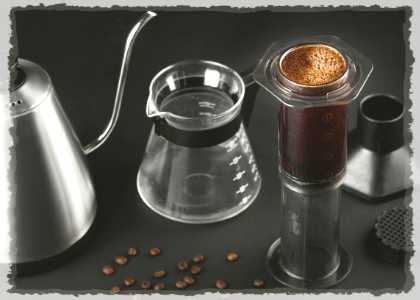
How to Buy the Best 100% Kona
Research before placing an order and beware of blends. Look at the history and the background of the coffee plantation before buying. For the highest quality, get your coffee from the small farms. You should also look out for coffee certified by the Hawaiian Department of Agriculture.
How to Make Kona
Even the best coffee can taste terrible if prepared incorrectly. To bring out the full flavors of Kona, follow the steps below:
1. Grinding the Beans
For a fresh cup of coffee, always buy whole beans and store them away from too much light and moisture. You might consider storing your coffee beans is in the freezer, taking the package out only when you are ready to grind and brew.
2. A Press is Preferable
The Aeropress produces a clean and crisp taste. You may also use a French press if you are looking for a heavier and richer flavor. In the French press, the grounds stay in the water longer than in an Aeropress or other devices where water only flows through the ground coffee.
3. Keep the Ingredients Pure
Coffee is 98 percent water. For unadulterated coffee, use pure filtered water and not bottled water. Filtered water is free of chemicals.
4. Always Control the Temperature
Closely monitor the temperature of the water. For the best coffee brew, you should keep the temperature within 190 and 200 degrees Fahrenheit.
5. Avoid Adding Unnatural Ingredients
Just like water, for unadulterated coffee; you should avoid using artificial ingredients like creamers and sweeteners for the best Kona coffee.
Best Kona Coffee Brand Reviews
Koa Coffee Plantation
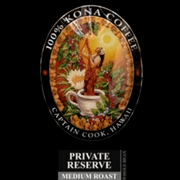
Kona Private Reserve
Grade: Extra Fancy/Peaberry
Notes: This Kona Private Reserve goes by the name Koa Coffee and is 100% Kona Coffee. It's available in 8oz, 1lb and 5lb packages.
There are a few things unique to Hawaii yet; nothing beats the unique coffee grown in Hawaii. The Kona Private Reserve Coffee is one of the unique coffees you’ll get to enjoy when you get down to Hawaii.
This Kona Private Reserve Coffee is a blend of the Extra Fancy Kona Coffee beans mixed with a handful of Kona Peaberry coffee beans. Extra Fancy Kona Coffee beans are the highest grade of Kona coffee while the Kona Peaberry coffee is the rarest form of Kona Coffee. As you can imagine, a mix of these two coffee beans creates a magical coffee blend.
The blend bursts with exotic coffee aromas and flavor while it feels extra smooth in your mouth. The Kona Private Reserve is, therefore, one of the best full-bodied coffees you will ever taste.
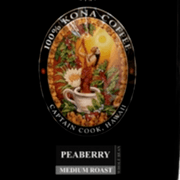
Peaberry Kona
Grade: Peaberry
Notes: You can get this Peaberry Kona Coffee in 5lb and 1lb packages. In every 100 bags of Kona Coffee harvested, only 3-5 bags make up Peaberry Kona Coffee.
If you have been wondering what the champagne of Kona is, then, you are at the right place. The uniqueness of Peaberry Kona coffee is the reason why coffee connoisseurs from around the world call this the champagne of Kona.
Peaberry Kona is the rarest form of coffee, and it has a full-bodied flavor. It has a low acid content. Unlike most coffee varieties, the roasting of this coffee only starts when you place your order. To retain freshness during the shipping process and when at home/ office, packaging of the coffee incorporates the use of vacuum packaging and sealing.
Since everyone has a preference in the roasting or the caffeine level in their coffee, you will be glad to note that you can order medium or dark roast Peaberry Kona. The best part about the coffee’s roast is that it is smooth and full-bodied with only a slight hint of bite.
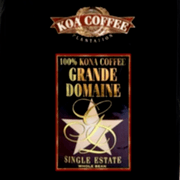
Grande Domaine Kona
Grade: Extra Fancy/Fancy/Peaberry/Number 1
Notes: This coffee is exceptionally smooth with no hint of bitter aftertaste. This is, therefore, the kind of coffee you can drink at any time.
This Koa Coffee is one of the oldest but the best coffee brands on the market. It is unique and considered the Granddaddy of Kona Coffees. The Grande Domaine Kona Coffee plants were first planted in 1918 meaning that they are about a century old.
This coffee brand gains its notoriety having being selected as Kona Coffee Cupping Contest Winner. The award is a result of the coffee’s outstanding quality and balanced taste. It comes packaged in 1lb, 5lb, and 8oz bags. so there's something for everyone. Besides the three convenient sizes, the Grande Domaine Kona Coffee comes in two grind/ roast types.
The Grande Domaine Kona is a blend of the top four Kona Coffee Grades: Extra Fancy, Fancy, Number 1 and Peaberry beans. It grows at the 2100-2500 ft elevation. Blending with the best of the best coffee beans makes this the best sun-drenched Kona Coffee on the market.
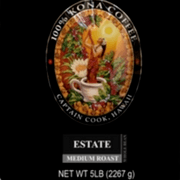
Estate Kona
Grade: Extra Fancy/Fancy/Peaberry
Notes: The coffee has a smooth, elegant and a perfectly balanced taste. It comes in three sizes; 1lb, 5lb and 8oz.
Roasting differs too as there are medium and dark roast Estate Kona Coffee varieties. Every palate gets satisfied with this Estate Kona Coffee.
Estate coffee is a mix of the top three Kona Coffee grades. Though Estate coffee constitutes three coffee grades, it is still pure Kona Coffee because the constituent grades are the purest.
The quality of Kona Coffee depends on the size of the coffee beans with the highest quality coffee being the biggest beans. Estate Kona is one of the best Kona Coffee brands because it comes from the biggest and the most flavorful beans.
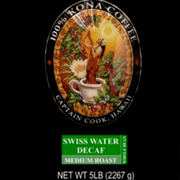
Swiss Decaf Kona
Grade: Swiss Water Decaffeinated Kona
Notes: The Swiss Decaf Kona Coffee comes in 2 sizes; the 1lb and the 5lb package.
Not everyone can tolerate caffeine, and in some cases, despite your love for coffee, you may be unable to take caffeinated coffee because of orders from the doctor. To save you from missing your favorite coffee brew, there is the decaf option.
The Swiss Decaf Kona undergoes preparation in a completely chemical-free process through the Swiss Water Process. Thanks to the use of as few chemicals as possible, the Swiss Decaf Kona is Swiss Water Decaffeinated.
Decaffeination takes place before roasting and when the beans are still green. Though other companies use methylene chloride or ethyl acetate for decaffeination, Kona Coffee uses the Swiss Water Method which is chemical free.
This decaffeinated coffee is the ideal coffee drink for anyone whose sleep is affected by caffeine. You can mix half-and-half decaf with regular Kona Coffee.
Volcanica Coffee
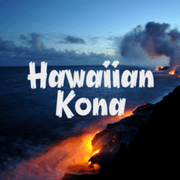
Hawaiian Kona Coffee
Grade: Extra Fancy
Notes: It has a high caffeine content thanks to the medium roast. With this coffee, you won’t have to worry about getting coffee that has been on the shelf or the stores for a long time because this coffee’s roasting takes place immediately after you place your order.
You’ll also like that this coffee is 100 percent pure. Coffee blends have only 5 percent of the pure Kona coffee meaning that this is the best coffee you could ever buy and drink.
We love specific things about coffee, but the one thing that we all treasure is a cup of full and richly flavored coffee. This Hawaiian Kona Coffee Extra Fancy is full-bodied, and it has a rich but a straightforward mellow character. The delicious taste of the coffee results from the low acid levels of the coffee as well as the heady aroma. It also has a complex but delightful winy taste.
The characteristics of the coffee resulting from cultivation under the shed. The coffee plant making this Hawaiian Kona Coffee Extra Fancy grows in dark volcanic lava rock on the slopes of Kona located on the west coast of the big island in Hawaii. The mild nights, bright sunny mornings, and humid rainy afternoons create the perfect condition for the growth of this Kona Coffee.
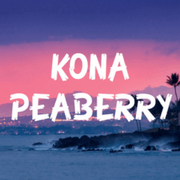
Volcanica Peaberry Kona
Grade: Peaberry
Notes: Roasting takes place after you place your order. To maintain the freshness of the coffee, the coffee is vacuum packed then sealed.
While the aroma of Kona Peaberry Coffee is intoxicating and leaves you nodding even before that first sip, the taste is out of the world. As soon as it touches your tongue, you feel the nutty, smooth and luscious mix of flavors that makes you look forward to the next sip. You may even replace your cup with a bigger mug!
Hawaii Coffee Company
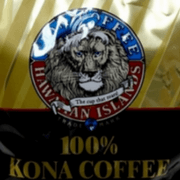
Lion 100% Kona Coffee
Roast Type: Medium
Notes: There are two main types of Lion 100% Kona Coffee; the Lion 24K Kona 7oz and the Lion 24K Kona French Roast 7oz.
The Kona 24k Kona 7oz is available at a great price, and you can buy either the light of the medium roast coffee. It is 100 percent pure Kona Coffee from Hawaii’s Kona Coast.
This Hawaiian Coffee is from the best Kona Coffee harvests from where the beans are roasted expertly producing a consistent gourmet coffee upon brewing.
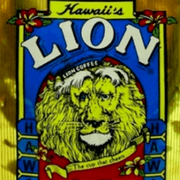
Lion 24 Karat Kona Coffee
Roast Type: French
Notes: This is the other Hawaiian Kona Coffee.
It has a bold sunset style dark roast which makes delicious and rich cups of coffee with every brew. This French Roast makes the perfect cup for anyone who loves dark roasted coffee.
It has the purest form of Kona Coffee which is consistent and smooth. The great part about dark-roast coffee is that it has a little caffeine. Therefore, you can brew and drink it in the evening without having to worry about losing sleep.
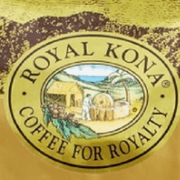
Royal Kona Coffee
Roast Type: Blend/Peaberry
Notes: Royal Kona is a blend of 100 percent Kona Coffee, Peaberry coffee and 10 percent Kona Blends
The Royal Kona Coffee first hit the mouths of coffee lovers in 1968 with its Aloha Flavor. Since then, decades later, this coffee brand continues to wow lovers of Hawaiian Coffee with its originality and the use of pure Kona Coffee and coffee blends.
The main varieties of Royal Kona Coffee include the Roy Yamaguchi Pacific Roast, the Royal Kona Chocolate Macadamia and the Royal Kona Decaf Kona Coffee. There also is the Royal Kona Private Reserve and the Royal Kona Single Cups Roy’s Pacific Roast. You may also like the Decaf Sam Choy and Chef Sam Choy’s or Chef Russel Siu.
Besides the coffee in vacuum sealed packages, there are Royal Kona Coffee types in coffee packets. You can also get a Royal Kona Essentials Kona Gift Box.
.
Final Thoughts
While the quality and the flavor or Kona coffee varies and we all have different palates, there is always a coffee that is better than the rest.
In this review, our favorite Kona Coffee brand is the Koa Coffee Plantation - Peaberry Kona. It comes in three different sizes and two roasts (medium and dark). The coffee is full-bodied and smooth with a touch of sass when it touches your tongue. It has a hint of bite. For these reasons, this coffee goes by the name Champagne of Kona to coffee connoisseurs.
Whichever Kona coffee brand you choose, you can be confident that you're getting a superior, gourmet taste of Hawaii!
Let us know in the comments below... what's your favorite Kona brand?
Happy Brewing (Aloha)!







